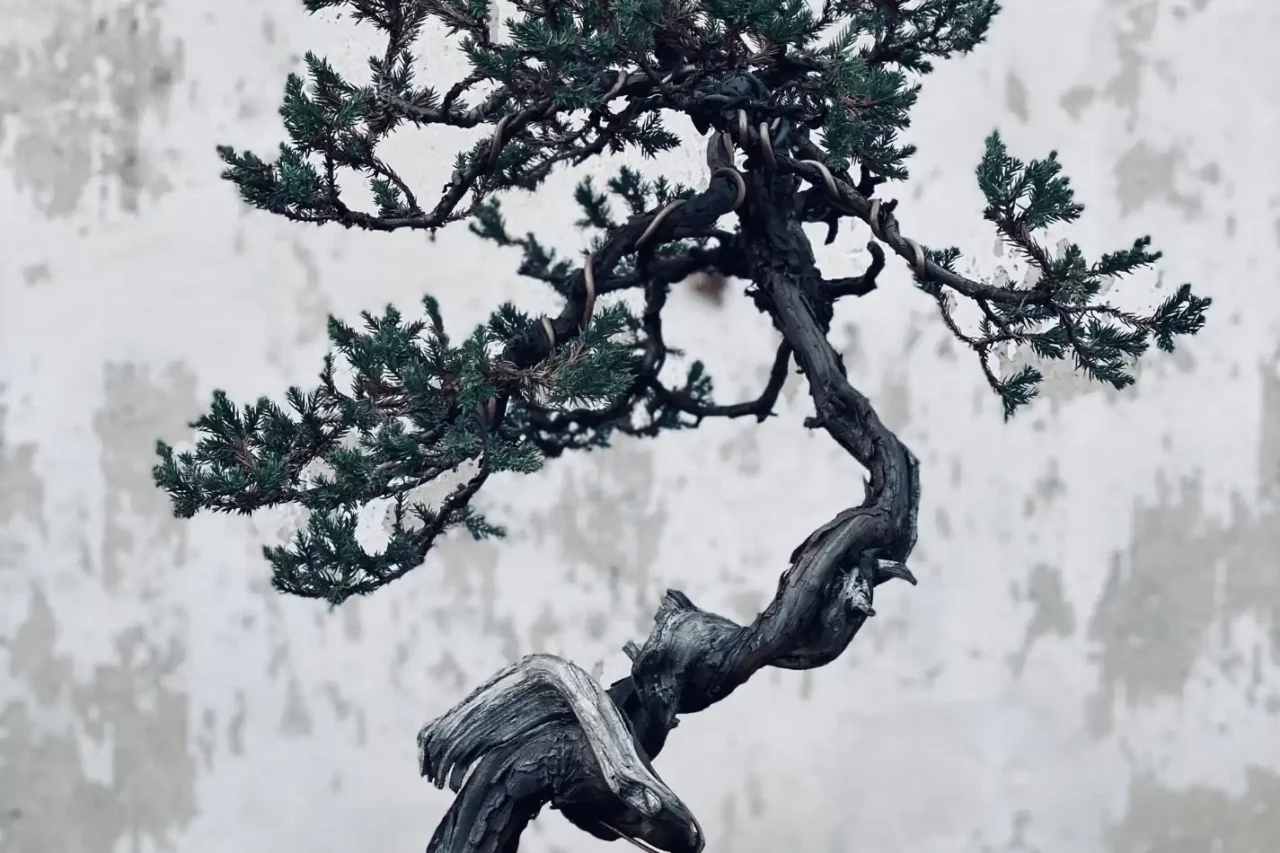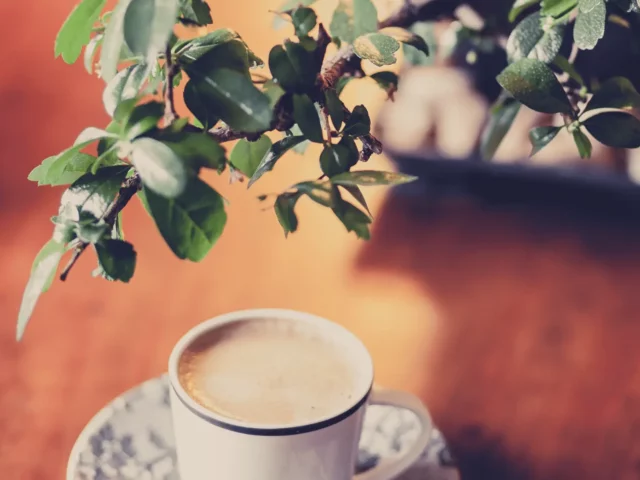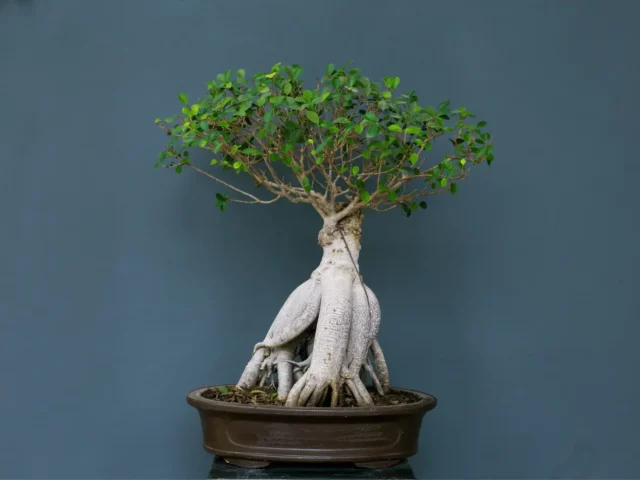If you are a bonsai enthusiast, you are most likely worried about the upcoming winter. Depending on where you live, you might have to bring your bonsai indoors during the winter. Some bonsai species are unable to survive outside in the cold.
This may lead you to wonder, how cold is too cold for bonsai?
Tropical bonsai starts to change physically below 5 degrees Celsius. So, they need to be brought indoors as soon as possible. Deciduous and temperate bonsai can survive in cold weather. But you may also store them inside during extreme conditions.
In this article, I will talk about when you must bring bonsai inside and how you can take care of your bonsai during winter. Some bonsai species can tolerate cold weather outdoors. So, I will also talk about them.

When You Should Bring Your Bonsai Inside?
If you have a tropical bonsai, you should bring it indoors as soon as the temperature gets below 40 degrees F or 5 degrees Celsius. This way, the bonsai will have time to adjust to the room temperature while the outside temperature decreases.
Then, semi-tropical bonsai trees can tolerate moderately freezing temperatures for a short time. So, you may also get them inside in the case of extreme freezing conditions.
Then there are deciduous and temperate bonsai trees. Both kinds of bonsai can survive in extremely cold weather as they go dormant in winter.
Temperate bonsai will start preparing for winter in the fall. They harden and slow down water intake. Similarly, deciduous trees shed leaves to keep moisture inside.
Temperate trees like cedars, elms, and pines can even withstand -40 degrees C in the mountains. However, unlike normal trees, bonsai trees cannot spread their roots deep into the ground. Therefore, they need extra support outside the harsh, freezing conditions.
So, if the outside temperature gets -10 degrees Celsius and freezing winter winds start to blow, you may bring your deciduous and temperate bonsai indoors.
But instead of bringing them inside right away, you should let these bonsai trees adjust to the cold temperature for a few days.
Why Does Tropical Bonsai Need Extra Care in Winter?
Tropical bonsai trees need a warm temperature all year round to survive. They cannot live in cold weather because the freezing temperature turns the water and moisture inside the tropical trees into ice.
When the ice expands inside the cells, it damages the shoots, branches, and even the roots of the tropical bonsai.
Besides, tropical bonsai cannot thrive in dry conditions. So, they need to be taken inside and hydrated carefully.
On the other hand, temperate and deciduous bonsai trees have a mechanism to cope with freezing temperatures.
Therefore, it is unnecessary to put them indoors at moderately cold temperatures.
Tips On Taking Care Of Bonsai In Winter
All kinds of bonsai need extra care during the cold weather of winter. So, here are some tips you can follow to keep your bonsai alive in this winter season.
Transfer Your Bonsai On A Larger Pot
During winter, the roots of your bonsai need to stay healthy. They need minerals to survive. The soil on the regular pots is already depleted to some extent.
Also, due to increased demand, they might not be enough to supply minerals to the bonsai during the winter.
So, you should transfer them to a larger pot with more soil so the roots have more space to grow.
Provide Natural Light To Your Bonsai
Since your tropical bonsai will be indoors most of the time in winter, they should spend a good amount of time in sunlight in spring and summer.
Then, instead of exposing them to too many UV rays or artificial lights in winter, place them near the window.
Thus, they will get some natural sunlight and stay warm.
Keep Your Bonsai In A Greenhouse Or Unheated room
If you are in icy conditions where temperatures can get below 10 degrees C, you should transfer your bonsai (temperate, deciduous, or tropical) to a greenhouse or an unheated room.
You must regulate the room’s temperature according to the type of your bonsai.
Put Your Bonsai In A Cold Frame
As I have mentioned, a dormant temperate or deciduous bonsai may also be taken inside, or you can put your dormant bonsai in a cold frame. The temperature during the night in winter can decrease suddenly. The fluctuation in temperature is harmful to the bonsai.
If you do not have a greenhouse or unheated room, you can put your bonsai into a cold frame. A cold frame will protect your bonsai from harsh wind, the hot sun, and cold.
It is a box that can be opened to aerate a dormant bonsai. The frame will minimize the cold so that the bonsai roots stay alive.
Sprinkle Some Water On Your Tropical Bonsai
Winter seasons are not only cold, but they can also be dry. Thus, your tropical bonsai will need some moisture during this time.
You can put the bonsai on a humidity tray. You can also sprinkle some water on the foliage to provide some moisture.
Water Your Bonsai Only When They Need
Your bonsai will not require too much water in cold weather. So, you do not have to water several times a day as you used to in summer.
When the bonsai’s soil seems too dry, only then you should water it. Too much water in winter can kill your bonsai.
Check for Insects Or Other Problems
Your bonsai can get infected with insects without proper sunlight indoors. So, you must check them from time to time for insects.
If you find insects, try to get rid of them without using harsh chemicals. If possible, use natural insect repellents.
Prune Your Bonsai Before It Goes Dormant
Do some minor pruning before your bonsai goes dormant in winter. Otherwise, the pruned parts will not heal properly when the bonsai goes dormant. You should clean the old foliage and moss from the bonsai before bringing it indoors.
Make sure to cover all the cut parts with cut paste or putty. It will close up the wound and keep the fungus away.
Do Not Interfere The Dormant Process Of Bonsai
Many people do not know this, but going dormant is crucial for temperate and deciduous trees. It is a natural process for them to stay healthy. So, when you take it indoors in mildly cold weather, thinking you are protecting it, you are actually damaging the bonsai.
Because of this, the bonsai will not go dormant promptly. It may not die right away, but the bonsai will grow weak after several winters. Eventually, it will die.
So, please do not get the temperate and deciduous bonsai inside before they go dormant. And even after that, place them inside only if you really have an acute freezing situation.
Be Careful About Too Much Sunlight
Sunlight is good for bonsai, right? Well, not always, especially when it is freezing cold. The direct sun rays and the cold weather create a fluctuation of heat. Your bonsai can get confused about whether or not it should release moisture. When it loses too much moisture in winter, it will die.
This condition is really dangerous for dormant bonsai outside. So, you can put the bonsai in the greenhouse for a while, or you can put them in a cold frame.
It is also a reason to bring tropical bonsai indoors during the winter, as they should not be exposed to direct sunlight for long periods of time.
Conclusion
So, how cold is too cold for bonsai? It depends on the species of your bonsai. Tropical bonsai trees must be grown in warm conditions.
Thus, it is essential to take them indoors in winter. Although the other species can withstand cold weather, you should take measures to protect them as well.






